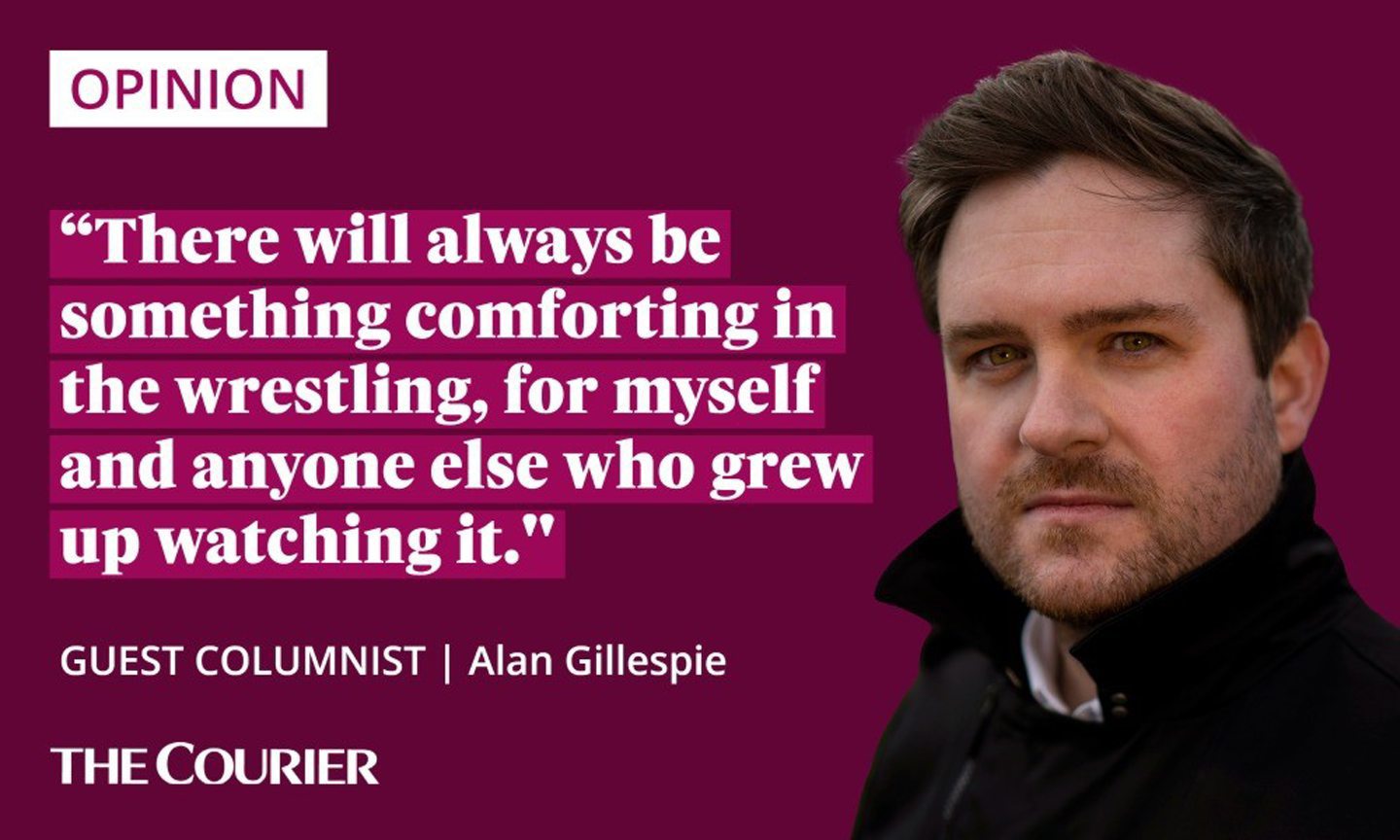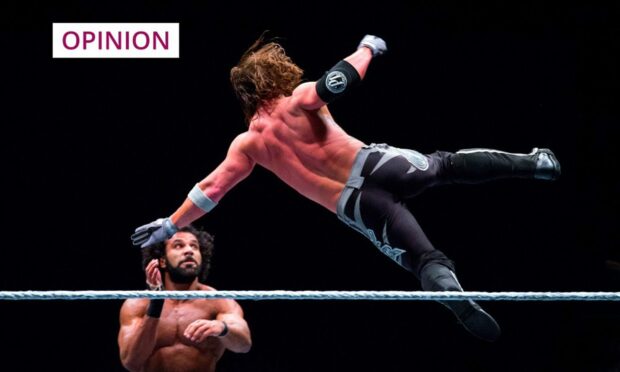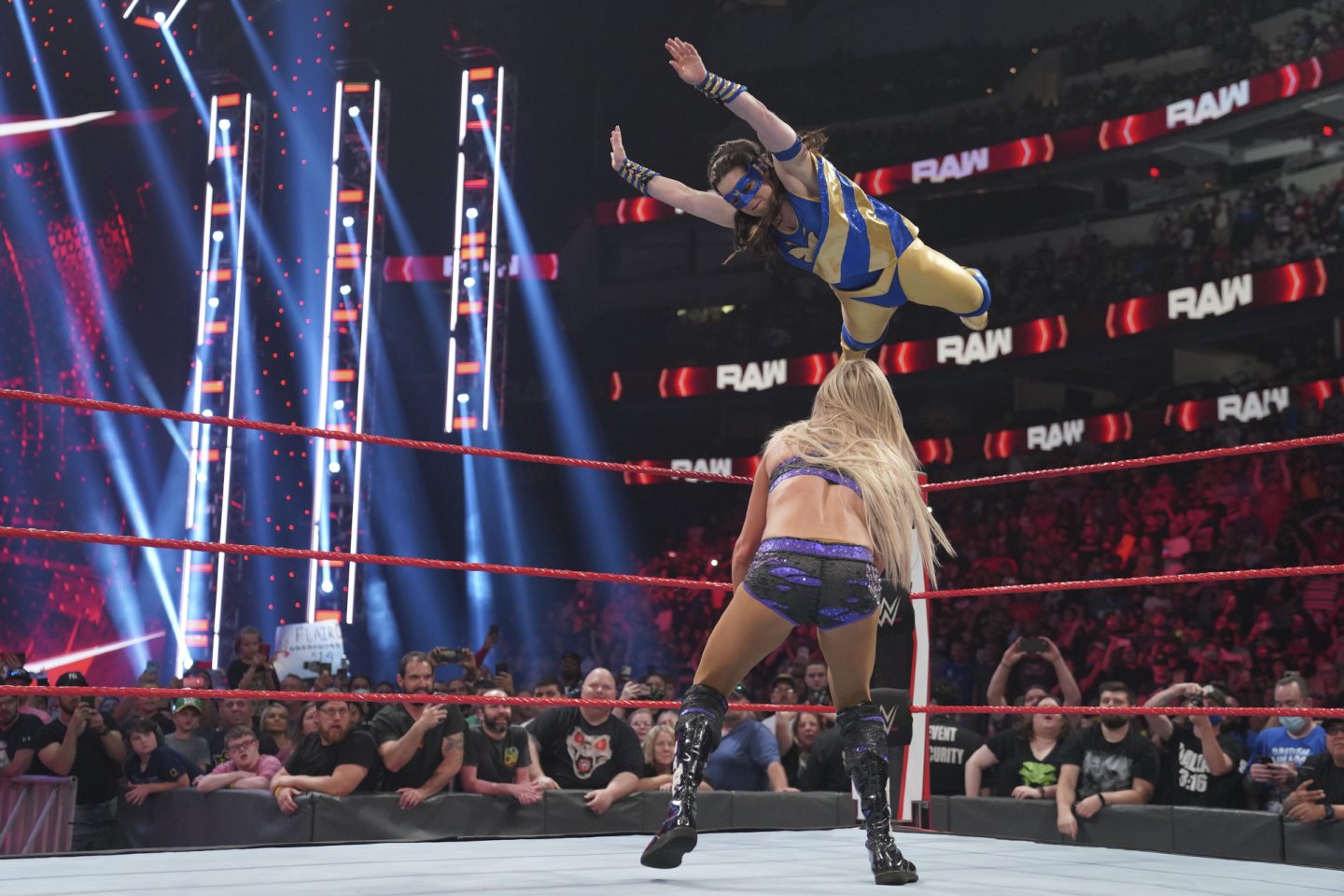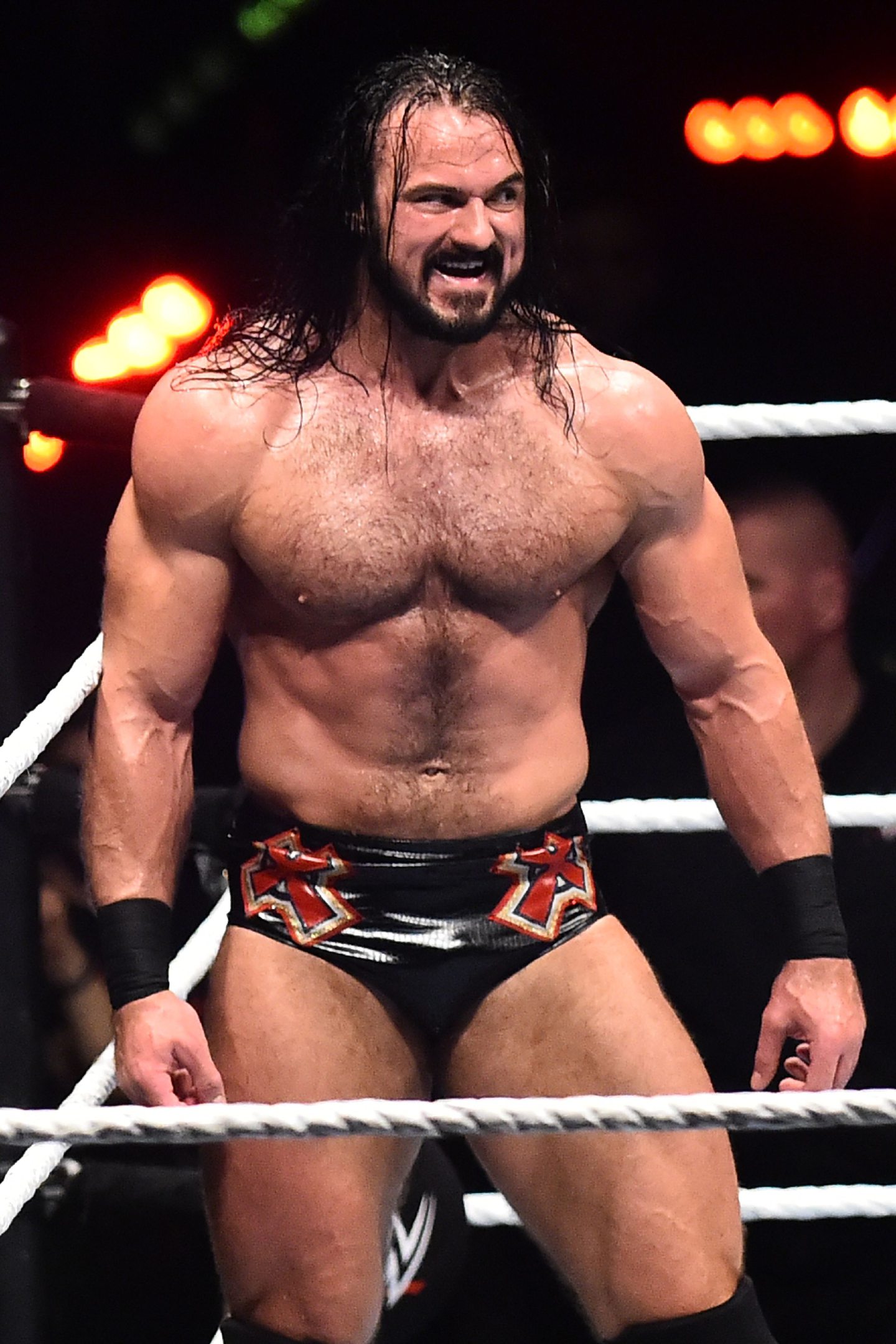When I was a boy, I had no ambitions to become a teacher, or a writer.
I didn’t fancy medicine or space travel either.
There was only one vocation that would satisfy me.
I’m not sure how the careers advisor felt when I declared that I was going to be Fife’s finest professional wrestler.
It was an ambition that whittled away over the years.
Although I did have a prolific run as an untrained teenager, breaking bedroom furniture with chokeslams, and encouraging pals to skelp me over the head with malleable biscuit tins.

While the most recognizable icons from my childhood, like Hulk Hogan and ‘Stone Cold’ Steve Austin, have sailed (mostly) into retirement, professional wrestling continues to flourish.
New companies and streaming services have created a vibrant landscape for new wrestlers on the up, and those coming to the end of their days in spandex.
On September 3rd, the WWE will run a stadium pay-per-view show in the UK for the first time in thirty years.
The Clash at the Castle is being held at the Principality Stadium in Cardiff.
It is the perfect opportunity for British fans, both new and lapsed, to get a taste of what the business currently has to offer.
Wrestling has a dark history
But pro wrestling is not all shiny belts and neon tassels.
The industry has a shameful history, which does not sit easily with what is still positioned as family entertainment.
Female wrestlers are largely given more respect now, but it was not long ago that they were being paraded around the ring in lacy lingerie, taking part in titillating ‘bra and panties’ matches, and utilized in storyline plots as nothing more than sexual pivots for their male counterparts.
Some fans have also found the WWE’s business partnership with Saudi Arabia distasteful; although they are hardly alone in overlooking the Kingdom’s abhorrent record of human rights violations for financial gain.
One of the company’s marquee names, John Cena, even refused to take part in the WWE World Cup in Riyadh, following the murder of journalist Jamal Khashoggi.
Scandal has often dripped its way into the pro wrestling bubble, from Hulk Hogan’s racial slurs to the outright horror of the Benoit murders and suicide.
WWE caused my childhood heroes to die long before their time
As scripted as the outcomes of pro wrestling undoubtedly are, the physical toll that the business can take on its participants’ bodies is extreme.
Long is the line of superstars who have suffered from painkiller addictions, mental health issues and traumatic brain injuries.
Many of my childhood heroes died long before their time, largely connected with the impact of the industry.
Wrestlers are not unionised, and often have to deal with mounting medical bills out of their own pockets.
30 years ago today, The British Bulldog defeated Bret Hart at #WWE #Summerslam 1992 in Wembley Stadium to win the Intercontinental title. It's considered to be one of the most iconic matches in WWE history. pic.twitter.com/V6sIkUWYEj
— Aaron Rift of NoDQ.com (@aaronrift) August 29, 2022
Thirty years ago, Wembley was the host of Summerslam ’92.
Over 80,000 fans saw Bret Hart lose in a legendary main event to the local hero, the Union Jack-waving ‘British Bulldog’ Davey Boy Smith.
Ten years after this triumph, the Bulldog would be dead, at the age of 39, having suffered a heart attack attributed to steroid use and drug abuse.
It’s an all too common fate for these athletes, who briefly appear larger than life before deflating again from prominence.
WWE is pure soap opera pantomime
This time, local interest is provided by Ayrshire’s Drew McIntyre, a former WWE champion who carries a claymore sword to the ring.
McIntyre brings his own brand of fiery Scots intensity, and is the first wrestler from the UK to have carried the world title.
In his match with current poster boy Roman Reigns (himself a cousin of mainstream wrestling megastar Dwayne ‘The Rock’ Johnson) you can expect plenty of power moves and high drama.
But what is it about this camp, sports/entertainment hybrid that keeps fans like me interested?
What many people perhaps don’t appreciate is that pro wrestling is pure soap opera, pantomime, with long-term character arcs and complex storytelling.
Archetypal goodies and baddies – or ‘babyfaces’ and ‘heels’ – battling over personal issues, sparkling gold belts, or just plain old physical supremacy.
In storyline terms, wrestling is no faker than a Marvel film, or a bingeworthy Netflix series.
It is live entertainment of the most glorious variety.
At the age of 37, I can now finally accept that my chances of becoming a pro wrestler are gone.
I am more comfortable working a chalkboard than a chokehold.
But there will always be something comforting in the wrestling, for myself and anyone else who grew up watching it.
Bringing the spectacle of a WWE stadium show back to the UK is long overdue, whether it is enjoyed as escapism, or as a baby-oiled slice of childhood nostalgia.
Alan Gillespie grew up in Glenrothes and teaches at an independent school in Glasgow. His debut novel ‘The Mash House’ was published in 2021.













Conversation